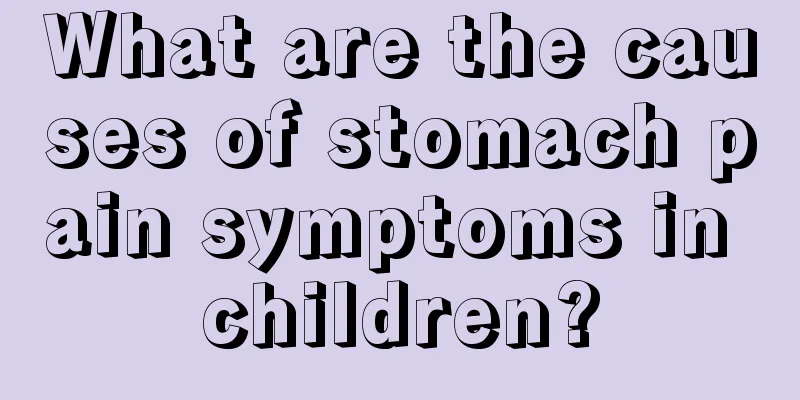Baby's face rash after fever subsides

|
Fever is the most common phenomenon in babies, mainly because children’s body resistance is limited. When your baby has a fever, timely fever reduction can avoid any impact on the body. However, some babies develop rashes on their bodies after their fever subsides. As parents, we are naturally worried that there will be more serious consequences when we see these abnormalities. So, what is the reason for the rash on the baby’s face after the fever subsides? Let’s take a look below. When a baby develops a rash after having a fever, it is medically called roseola infantum. Roseola infantum, also known as fever rash or roseola, is a sudden rash caused by a viral infection. It can occur throughout the year, but is more common in spring and autumn. The incubation period of roseola infantum is approximately 10-15 days. Although it is a contagious disease, it is very safe and will not spread as widely as measles or chickenpox. The chance of family members being infected at the same time is low. Roseola infantum mostly occurs in infants and young children aged 6 to 18 months. The disease often develops suddenly, with a rapid rise in body temperature, usually between 39°C and 40°C. Severe patients with high fever in the early stages may have convulsions, and some may experience mild runny nose, cough, eyelid swelling, and conjunctivitis. During the fever period, there are symptoms such as poor appetite, nausea, vomiting, mild diarrhea or constipation, as well as congestion in the pharynx and swollen lymph nodes in the neck. After three to five days of fever, the body temperature drops suddenly. After the fever subsides, the child may develop light red macules or maculopapules of varying sizes all over the body, starting from the chest and abdomen and quickly spreading to the whole body. At this time, the child's fever has subsided and he can fall asleep peacefully. This is medically called "fever rash", which is a unique manifestation of roseola infantum. What to do if your baby has a rash after a fever 1. Let the baby rest. The ward should be quiet, the air should be fresh, and the quilt should not be too thick or too much. 2. Keep the skin clean and hygienic, and wipe off the sweat on your child's body frequently to prevent him from catching a cold. 3. Let your child drink more boiled water or fruit juice to facilitate sweating and urination, and promote the excretion of toxins. 4. Eat liquid or semi-liquid food. 5. When the body temperature exceeds 39°C, you can wipe the child's body with warm water or 50% alcohol to prevent convulsions caused by high fever. 6. Appropriate use of antiviral drugs: When the baby starts to develop a rash after the fever subsides, take antiviral drugs such as ribavirin appropriately. Antibiotic treatment is generally ineffective. In addition, traditional Chinese medicine has a good effect in treating this disease. When the fever first occurs, you can take heat-clearing and detoxifying drugs under the guidance of a doctor. After the rash appears, take some detoxifying and rash-clearing drugs to help excrete pathogens and toxins in the body. 7. Reduce fever promptly when fever is high: The main symptom of roseola infantum in the early stage of the disease is high fever, so the focus of treatment is to reduce fever. Among them, physical cooling is a relatively safe method of reducing fever, but it may be difficult to reduce fever quickly when the body temperature is too high. There are many physical cooling methods. You can apply a towel soaked in cold water to the forehead, or take an alcohol and warm water bath to wipe the child's neck, armpits, elbows, groin and other wrinkled areas to help dissipate heat. |
<<: What to do if your baby develops a rash after a fever
>>: Rash after leprosy vaccine
Recommend
What are the symptoms of enlarged tonsils in children?
Young children's immunity is relatively imper...
Baby itches all over body when sleeping at night
If the baby itches all over the body when sleepin...
What to do if your child has a partial diet
Nowadays, many children don’t like to eat vegetab...
What is fundus examination for premature infants?
As the name suggests, premature babies are childr...
What are the free pediatric vaccinations?
With the rapid development of the economy, the in...
What will happen if a 10-year-old doesn't like to wash his face?
There are many ten-year-old children who don'...
Why is it that atypical lymphocytes are high in children?
High levels of atypical lymphocytes in children a...
Why does my child always cough?
Many children are very prone to diseases because ...
What to do if your baby has cough and tracheitis
When there is a new baby in the family, the baby ...
How to treat baby's allergic cough effectively
All parents hope that their babies can grow up he...
How to improve the slow hair growth of a two-month-old baby?
I don’t know what the reason is, but the hair of ...
What should I do if my child has droopy eyelids?
It is not easy for any woman to be a mother. It i...
Mineral water cannot be used to mix milk powder
Recently, there have been media reports that mine...
What to do if infants and young children have bloating?
Many times, we all have physical conditions of on...
What should I do if my child has a runny nose?
Children are the group most likely to have a runn...









